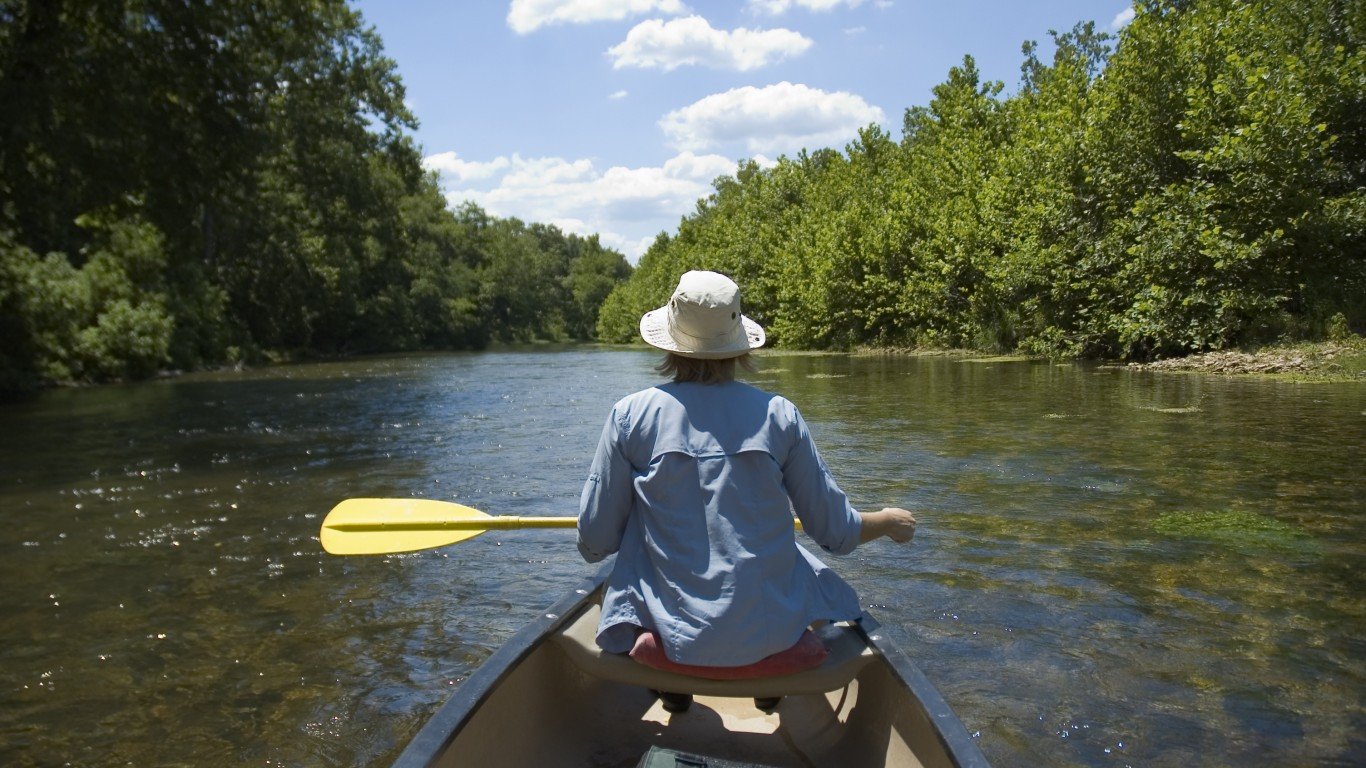

Humans and rivers have been intertwined forever. Rivers have allowed people to build civilization, transport all manners of goods, and have safe drinking water access to food. However, humans are the only creatures that often rely on rivers for their dinners. Fish, birds, mammals, and snakes all call the river and its adjacent land home! The United States has roughly 3.5 million miles of rivers and streams and many of them are filled to the brim with various snake species. Therefore, it might be wise to study some of the snakes that almost certainly live in your local rivers before you embark on a journey downstream.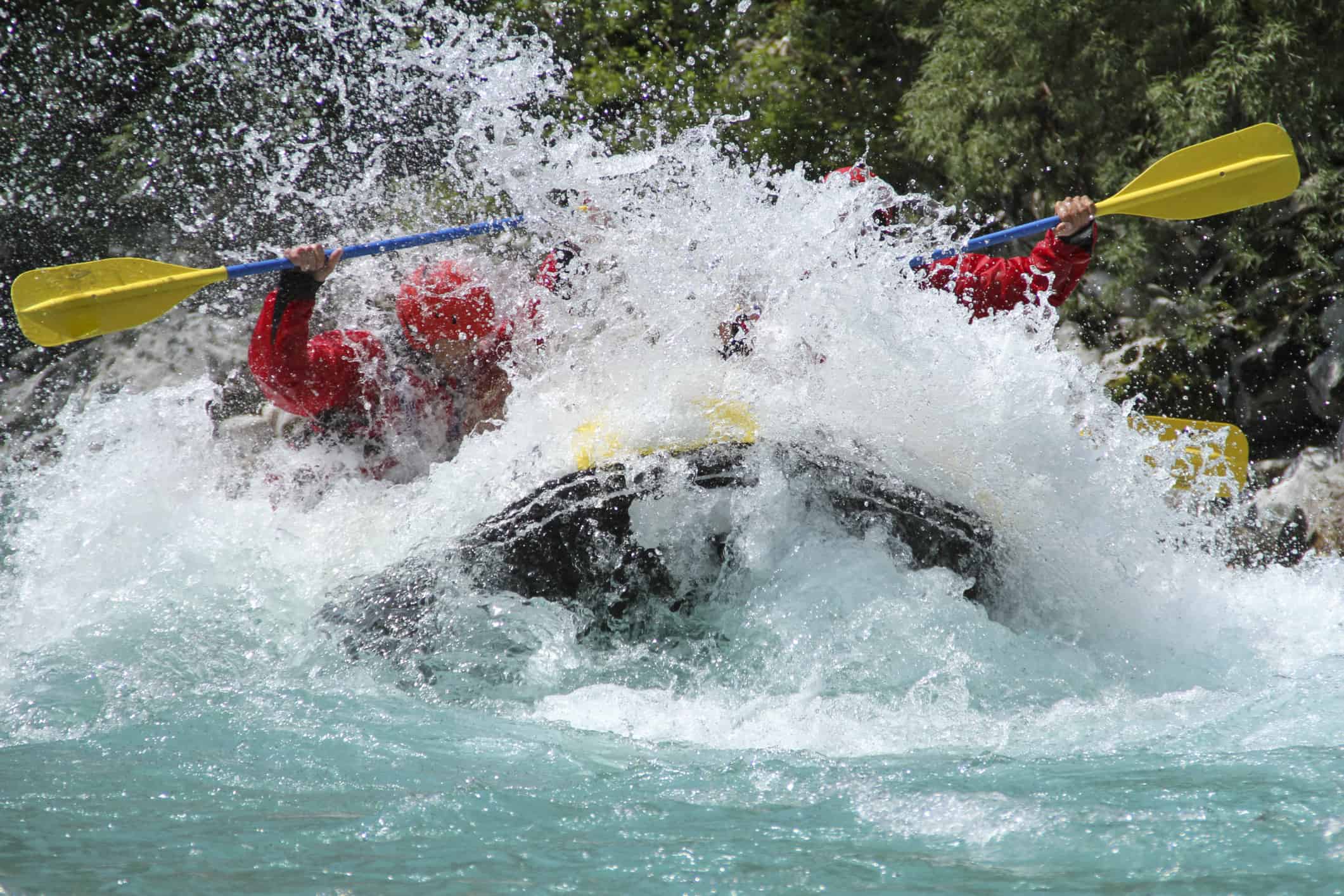
It could be said that human infestations on rivers are larger than snake infestations. Just look at the way humans have created some of the Most Polluted Rivers Across the Globe, but that’s another story. What we can say, though, is the longer the river and the more varied the habitats it runs through, the larger the number of snake species and individuals you could encounter there.
After consulting various sources in the whole of the United States, here are the 9 longest, most snake-infested rivers. We put them in order by length and have given you a sample of the various species of snakes that live there—some of them quite deadly!
10. The Ohio River, Ohio

The Ohio River runs from the Appalachian Mountains and foothills across the Midwest to empty into the Mississippi. The region has a temperate climate, with hot summers and cold winters. While the Ohio River is one of the most heavily populated rivers in the country, various types of lands along the river provide great living areas for snakes. Interestingly, one of the common semiaquatic snake species living along the river is the queen snake, similar to a garter snake, which feeds on crayfish.
Types of Snakes in The Ohio River
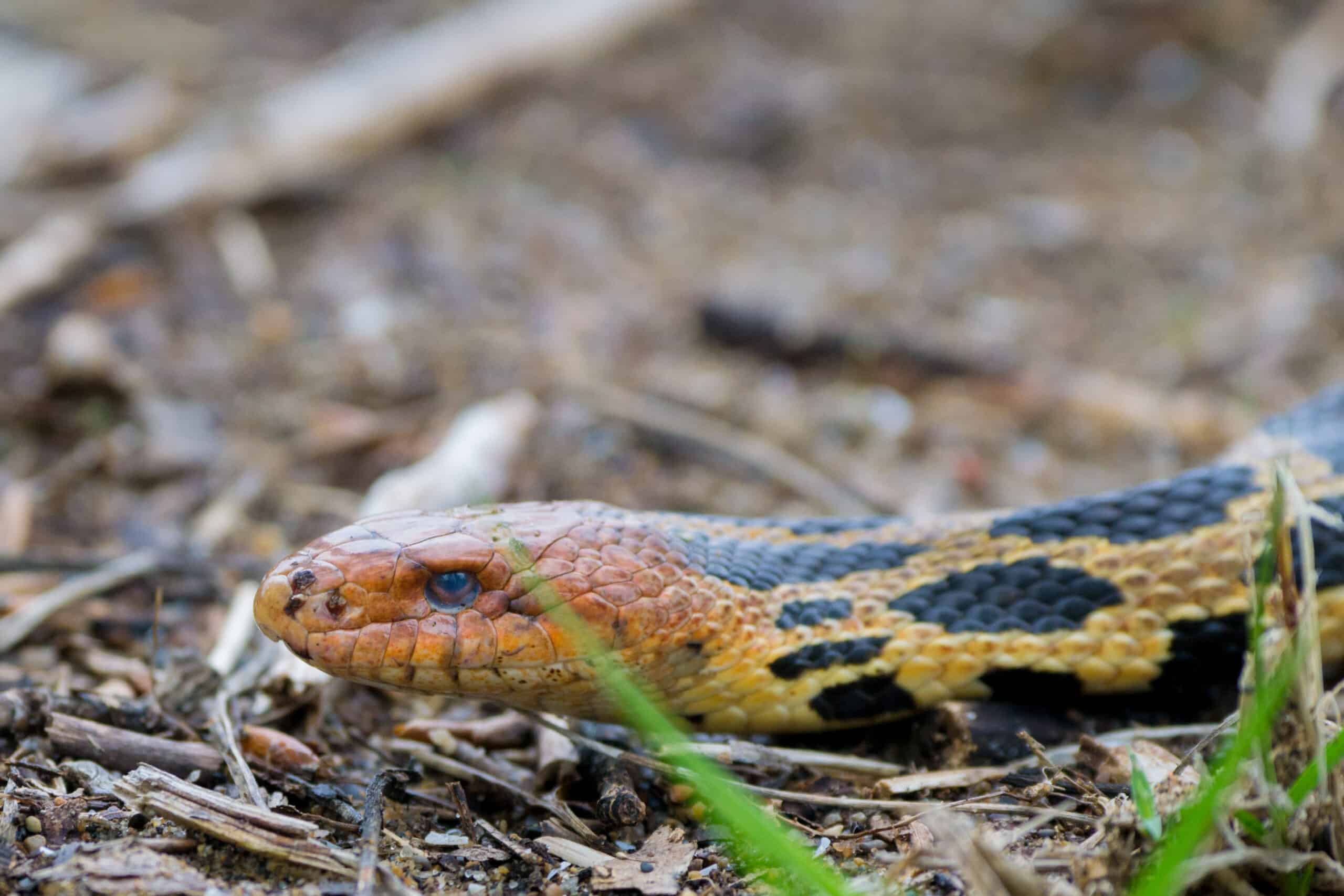
These are some of the species of snakes you might encounter in the Ohio River or on its banks:
- Ribbonsnake
- Northern water snake
- Copper-bellied water snake
- Eastern fox snake
- Ohio Valley water snake
- Queen snake
9. The Snake River, Wyoming
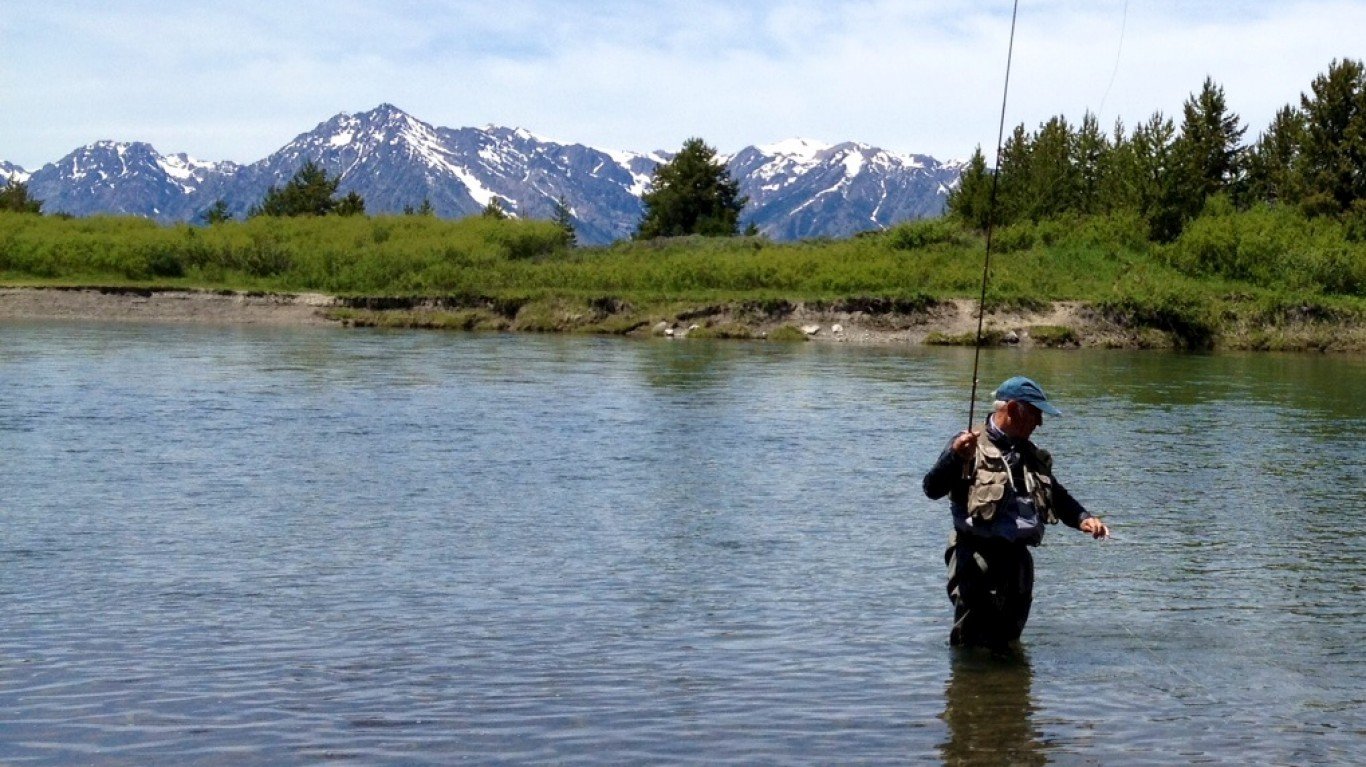
Originating in Wyoming and “snaking” across the Pacific Northwest, the Snake River is the largest tributary of the Columbia River. It wasn’t named for being a river of pure snakes despite the presence of snakes. Instead, it got its name from the Snake tribe that lived in the region. It was once teaming with 2 million salmon until four dams were built that disrupted their spawning and drove them nearly to extinction. Small salmon were an important food source for snakes in the region. There have been proposals to remove the damns and allow the fish and snake populations to rebound.
Snake River Species

These are some of the various snake species you might encounter on the water or the riverbanks of the Snake River:
- Western rattlesnake (Northern Pacific rattlesnake)
- Terrestrial garter snake
- Common garter snake
- Ringneck snake
- Western ground snake
- Long-nosed snake
8. The Red River – American South

The Red River of the South (to distinguish it from the Red River of the North in Minnesota, the Dakotas, and Canada) forms a significant part of the border between Oklahoma and Texas before making its way to the Mississippi. Texas is home to around 68 species of snakes and the Red River is a good place to go if there just are not enough “danger noodles” near you at all times. Texas is home to enormous numbers of venomous copperheads and especially rattlesnakes. If you hear anyone say they saw a “puff adder” don’t get alarmed, though. Actual puff adders are a deadly North African species and definitely not found in the wild of Texas.
Red River Snakes
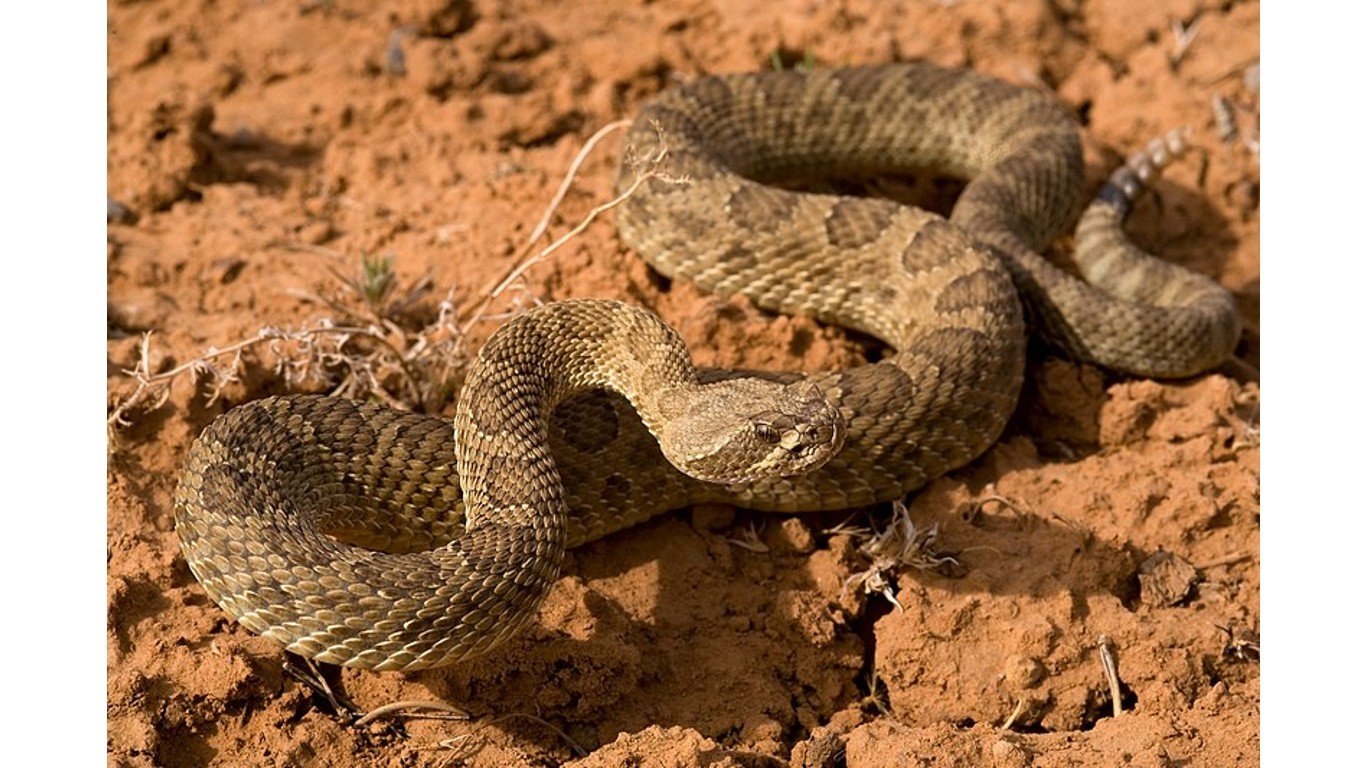
Here’s some of the snakes to find in and around the Red River of the South:
- Copperhead
- Hognose (colloquially called the “puff adder”)
- Timber rattlesnake
- Northern water snake
- Black racer
- Green snake
- Garter snake
- Rat snake
7. The Columbia River – Oregon

The Columbia River originates in the Canadian Rockies and works its way southwest to form the Washington-Oregon border before emptying into the Pacific. The alpine heights of the mountains are not favorable to most snakes, but for most of its length, the Columbia flows through more favorable climate zones. The rubber boa seems to thrive in the alpine areas of up to 10,000 feet (3,000 m) elevation. Thankfully, the rubber boa does not bite humans and is often used to help people with snake phobias.
Columbia River Snake Species
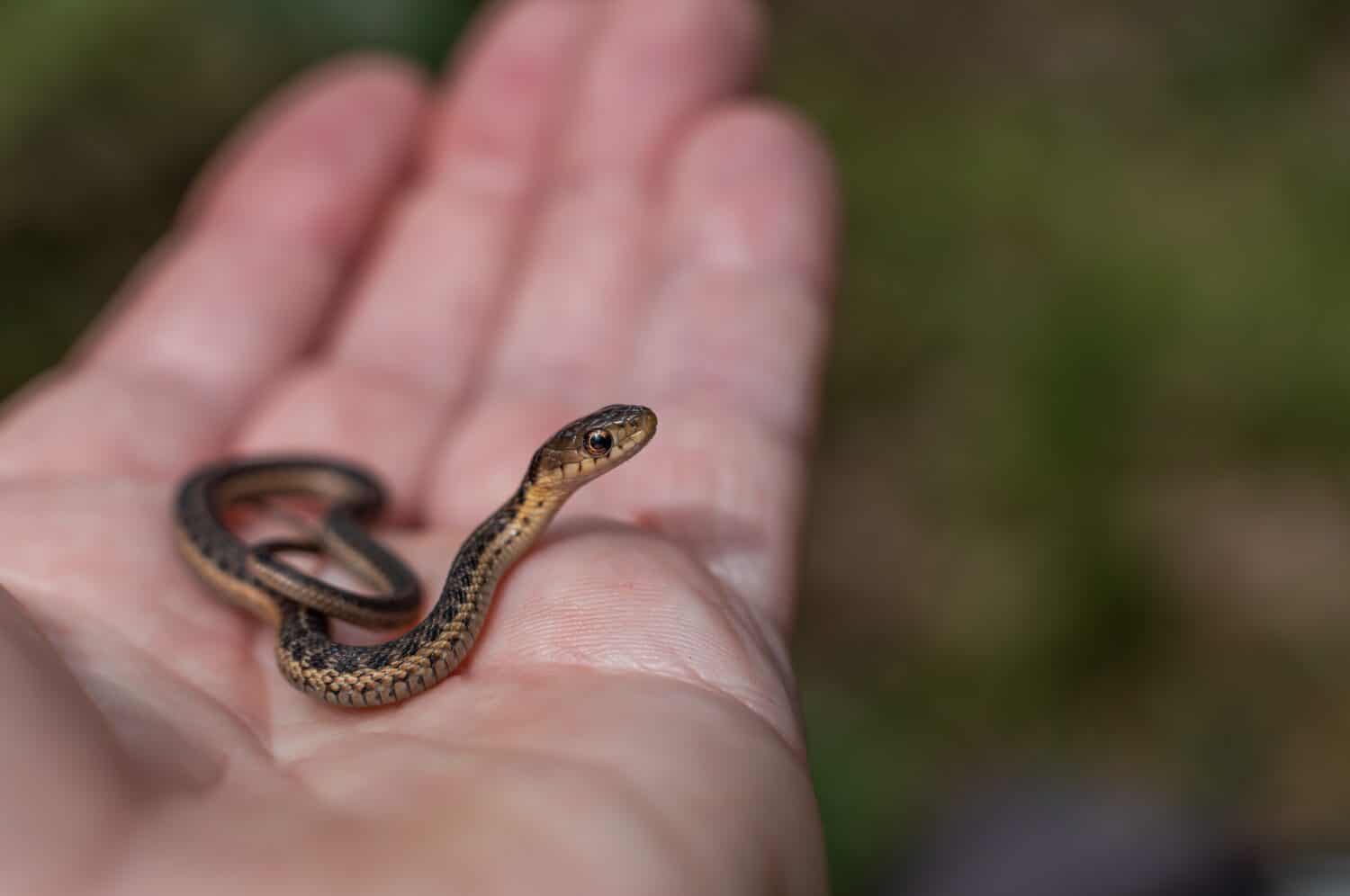
Here are some of the varied snakes you’ll find along the Columbia River:
- Garter snake
- California mountain kingsnake
- Rubber boa
- Ringneck snake
- Night snake
- Western rattlesnake (Northern Pacific rattlesnake)
- Western yellow-bellied racer
6. The Arkansas River – Arkansas

The Arkansas River, a major tributary to the Mississippi, has three distinct sections. It originates in central Colorado and it slows down and traverses the Great Plains as a broad, flat, slower-moving waterway. Across Arkansas, it becomes even wider and is contained in a channel with flooding controlled by dams and levees. Even in the rugged part of its course, snakes can find sheltered pools and exposed rocks for hunting. It’s vital to be careful as a lot of these snakes are deadly.
Arkansas River Snakes Species
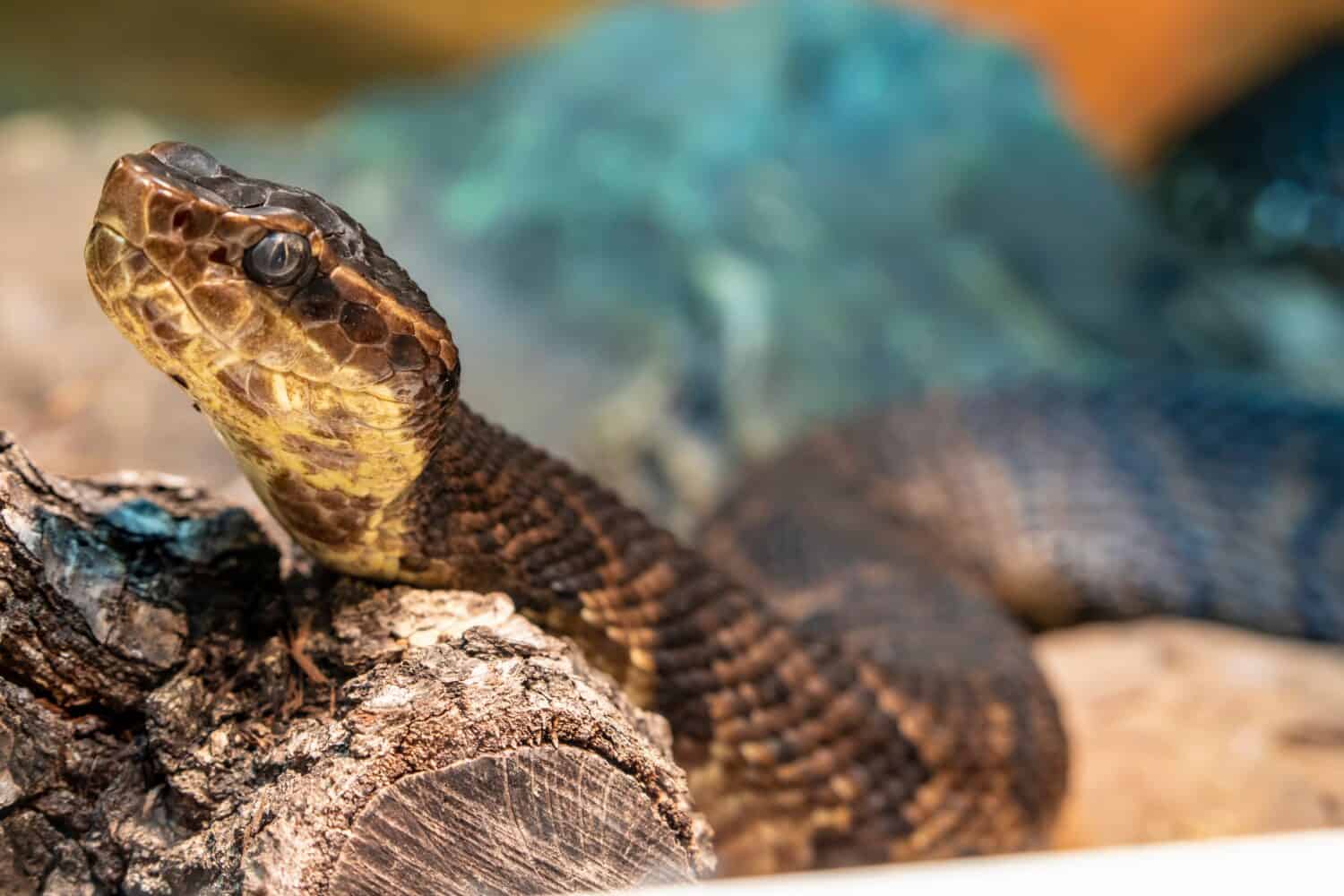
A good many species of water snakes make their home in and around the Arkansas River:
- Broad-banded water snake
- Diamondback water snake
- Graham’s crayfish snake
- Gulf swamp snake
- Midland water snake
- Green water snake
- Northern cottonmouth
- Plain belly water snake
- Queen snake
5. The Colorado River – Southwest, USA
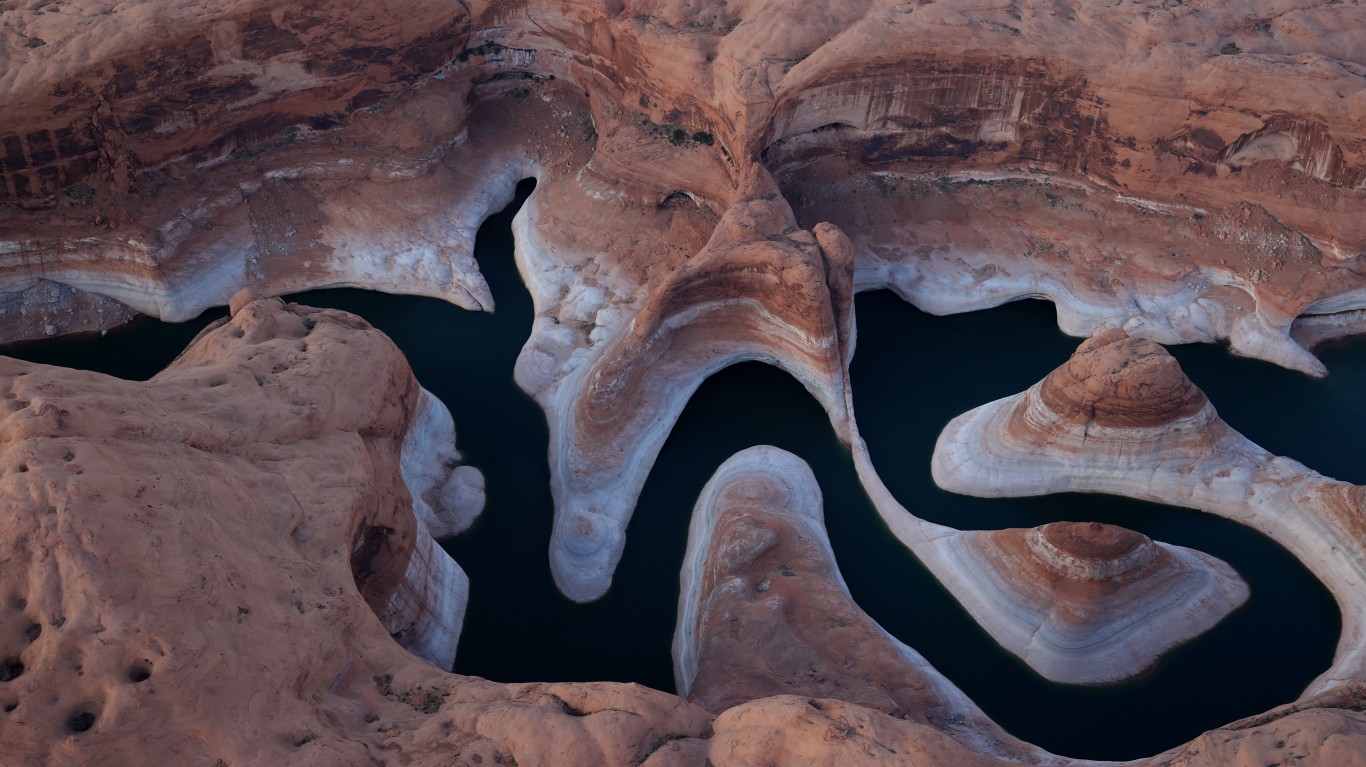
The Colorado River has been all over the news in recent years as California and much of the rest of the Southwest have endured a decades-long drought. Serving the water needs of 7 states, it brings life to millions of people and animals. That being said drought have brought the Colorado River system to its knees.
However, as long as the river and its lakes do not completely dry up, snakes can adjust reasonably to lower water levels, as they live and hunt mainly along the banks. The low water levels still pose a risk to the vegetation growing along its banks. This can cause a deficit of food and shelter for some prey species, such as rodents or fish that live in shady shallows, and the snakes that feed on them.
Colorado River Snakes Species

These are some of the many snake species with habitats along the Colorado River:
- Bullsnake
- Common garter snake
- Rattlesnake
- Great Basin gopher snake
- Great Plains rat snake
- Tantilla hobartsmithi
- Coachwhip
- Glossy snake
- Kingsnake
- Ring-necked snake
- Central Plains milksnake
- North American racer
- Western hognose snake
4. The Rio Grande – Texas
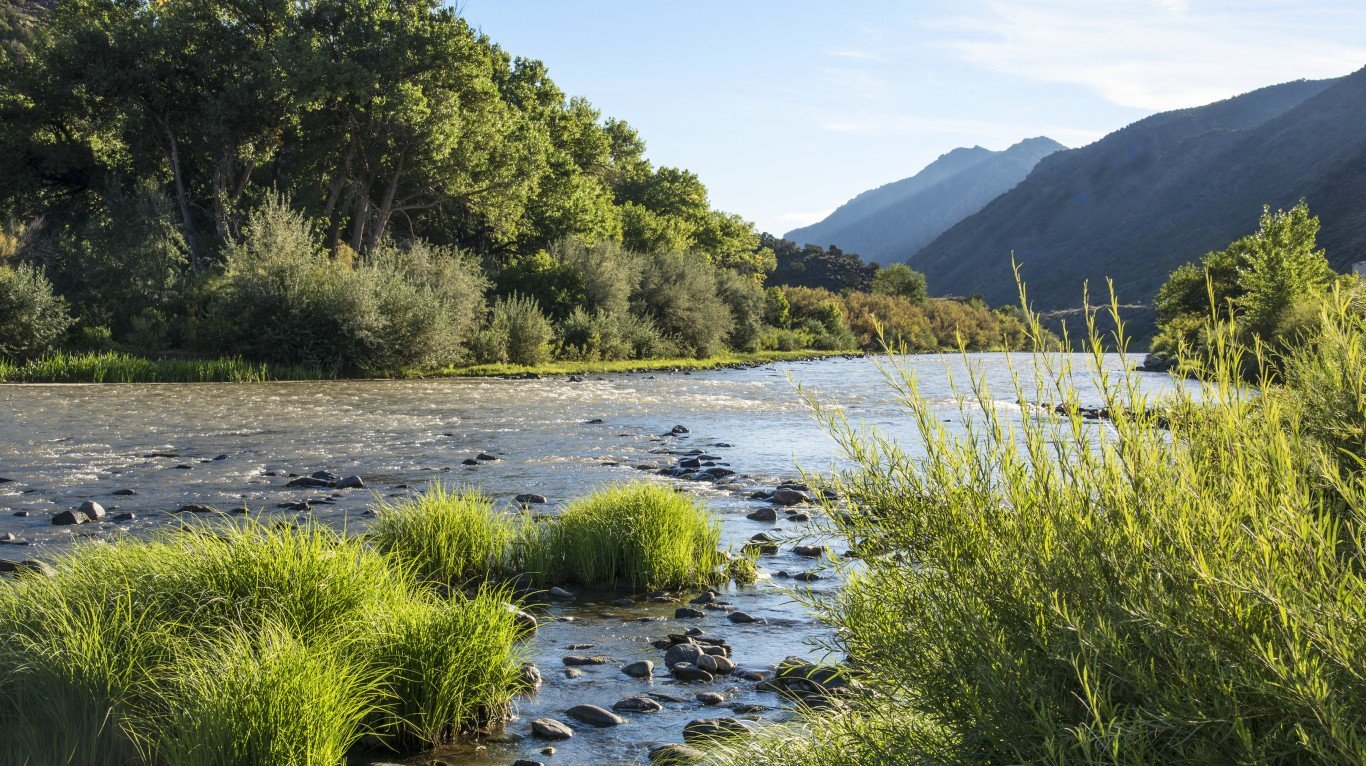
Originating in the Colorado Rockies, the Rio Grande flows southeast to the Gulf of Mexico, forming the border between Texas and Mexico along most of its length. The river runs through regions of mainly arid and subtropical climate types and is seen as a source of life all across the region. Without the river, there would surely be far fewer snake species in the region, but with it, you’ll encounter species endemic to dry or even desert conditions as well as those that thrive in and near water. In short, its quite the mixed bag.
Rio Grande Snakes Species
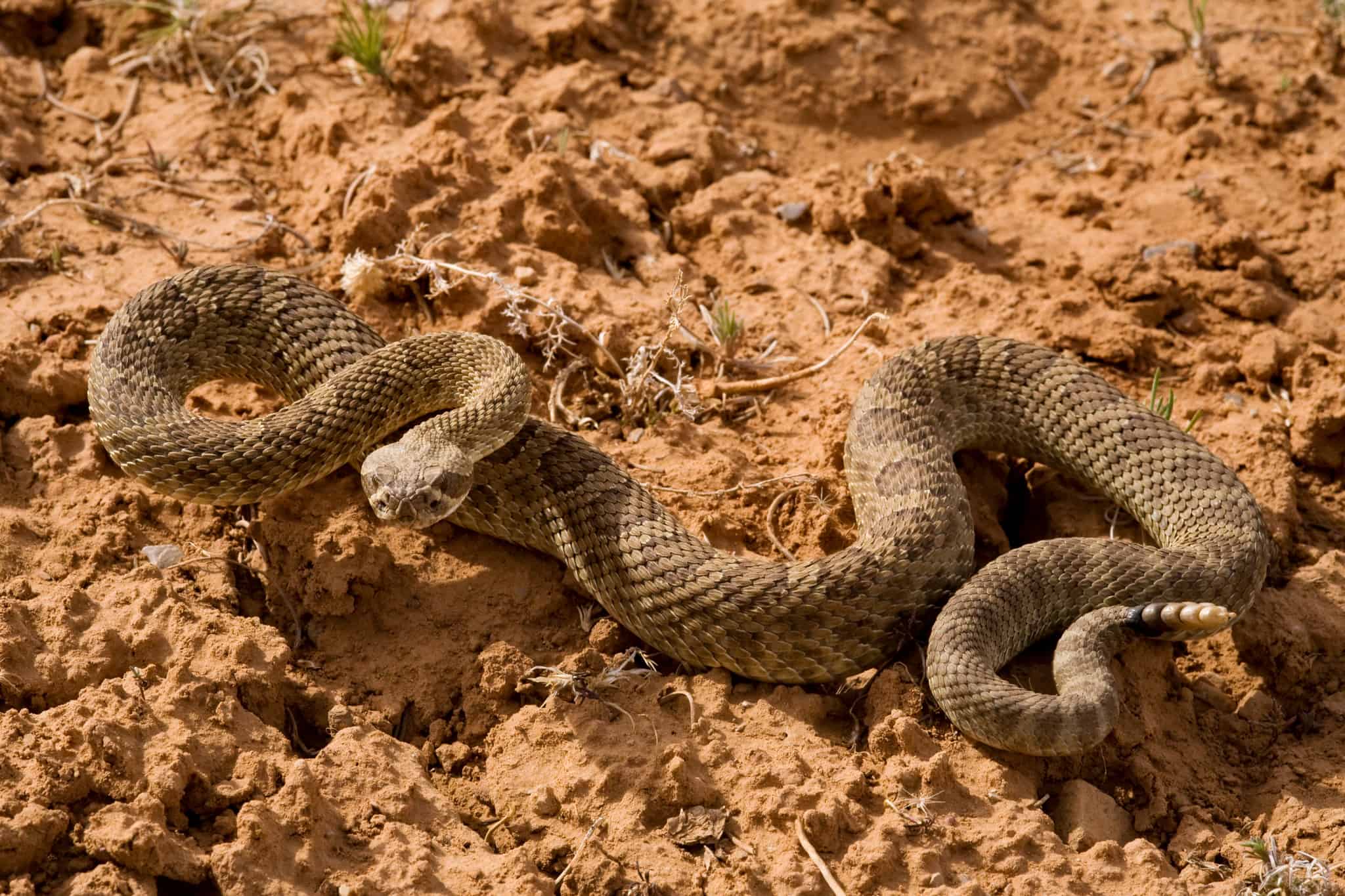
Here are some of the many species that call the Rio Grande home:
- Texas blind snake
- Mexican racer
- Black-striped snake
- Texas indigo snake
- Great plains rat snake
- Schott’s whipsnake
- Bullsnake
- Flat-headed snake
- Checkered garter snake
- Gulf Coast ribbon snake
- Texas coral snake
- Western diamondback rattlesnake
- Prairie or Great Plains rattlesnake
3. The Yukon River – Alaska
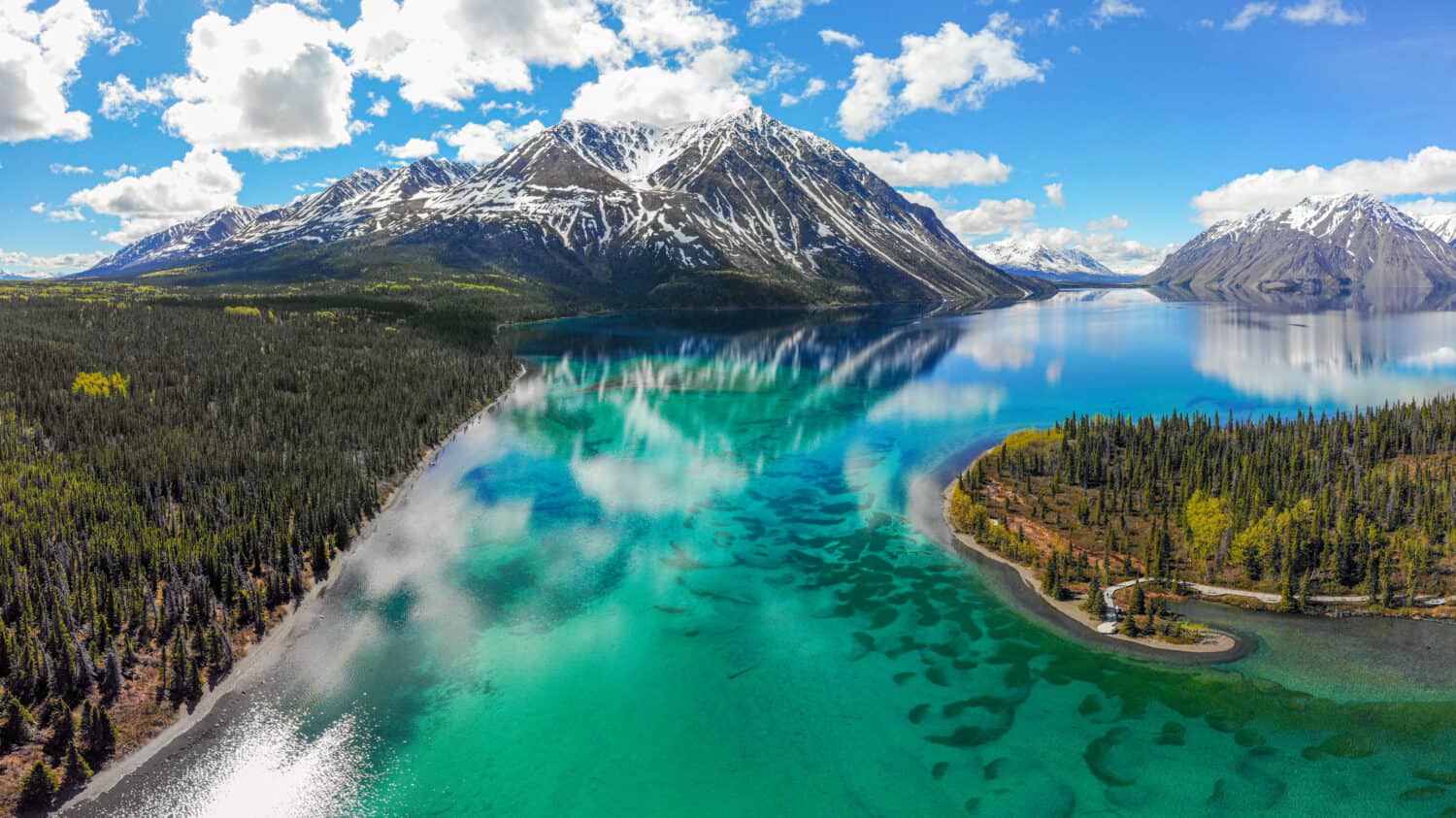
Strangely enough, the Yukon River has no snakes at all. In fact, there are no snakes or reptiles of any sort in the whole state of Alaska, aside from rarely-sighted sea turtles. The reason is pretty obvious. Alaska is just too darn cold! Reptiles use their external environment to regulate their body heat: sunning on a warm rock or retreating to the shade as necessary. And Alaska, with its continental and arctic climate conditions, cold-blooded animals couldn’t live in the state.
2. The Mississippi River – Midwestern US
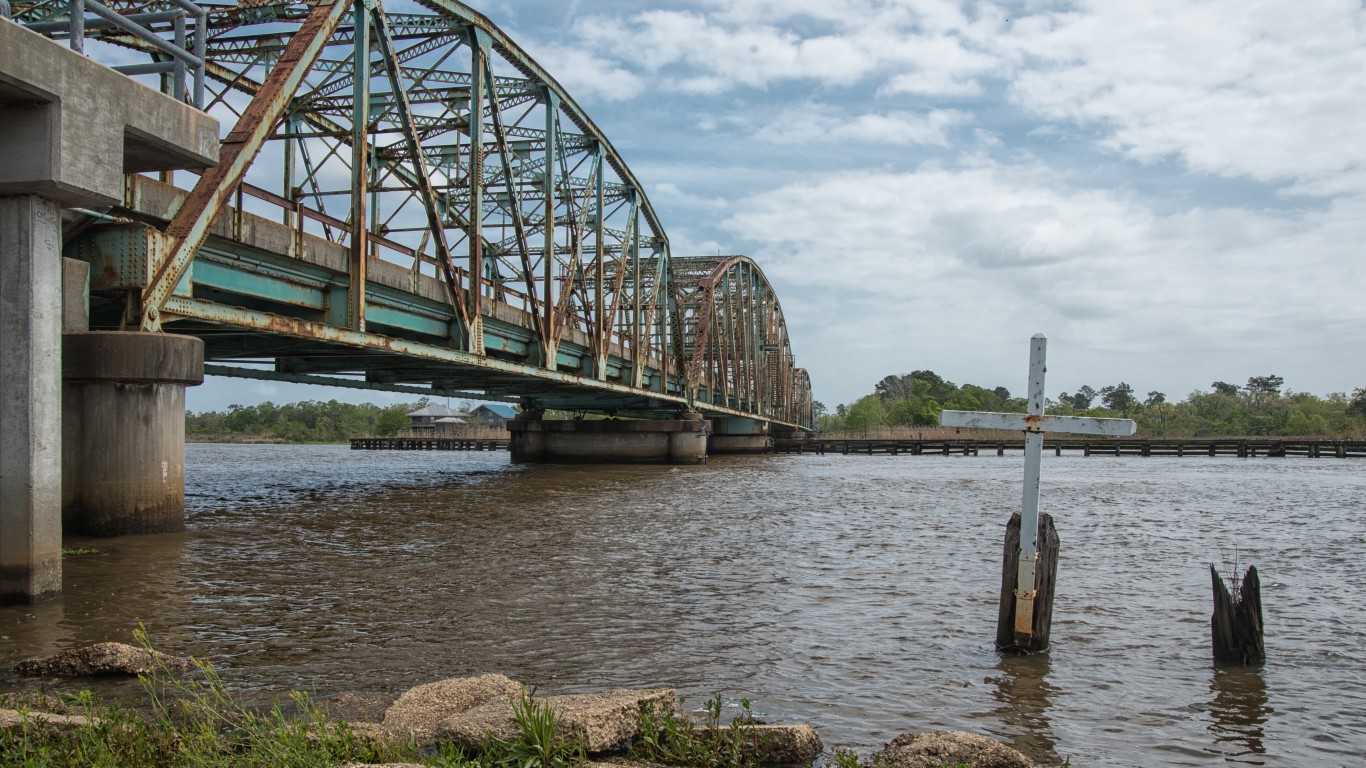
The Mississippi River is so enormous that its watershed drains parts of 32 U.S. states and two of Canada’s provinces. In the northern part of its journey, it runs through a humid continental climate with cold winters and warm summers. In the south, the climate is humid subtropical—a much more ideal habitat for snakes.
Unfortunately, it is also one of the most polluted rivers in the world. Running through the agricultural heartland of the continent, the river absorbs runoff from chemical fertilizers used in agriculture and lawn care. The nutrients cause algae blooms that use up the oxygen in the water and kill off aquatic life, disrupting the food chain for snakes and other predators.
Mississippi River Snakes Species
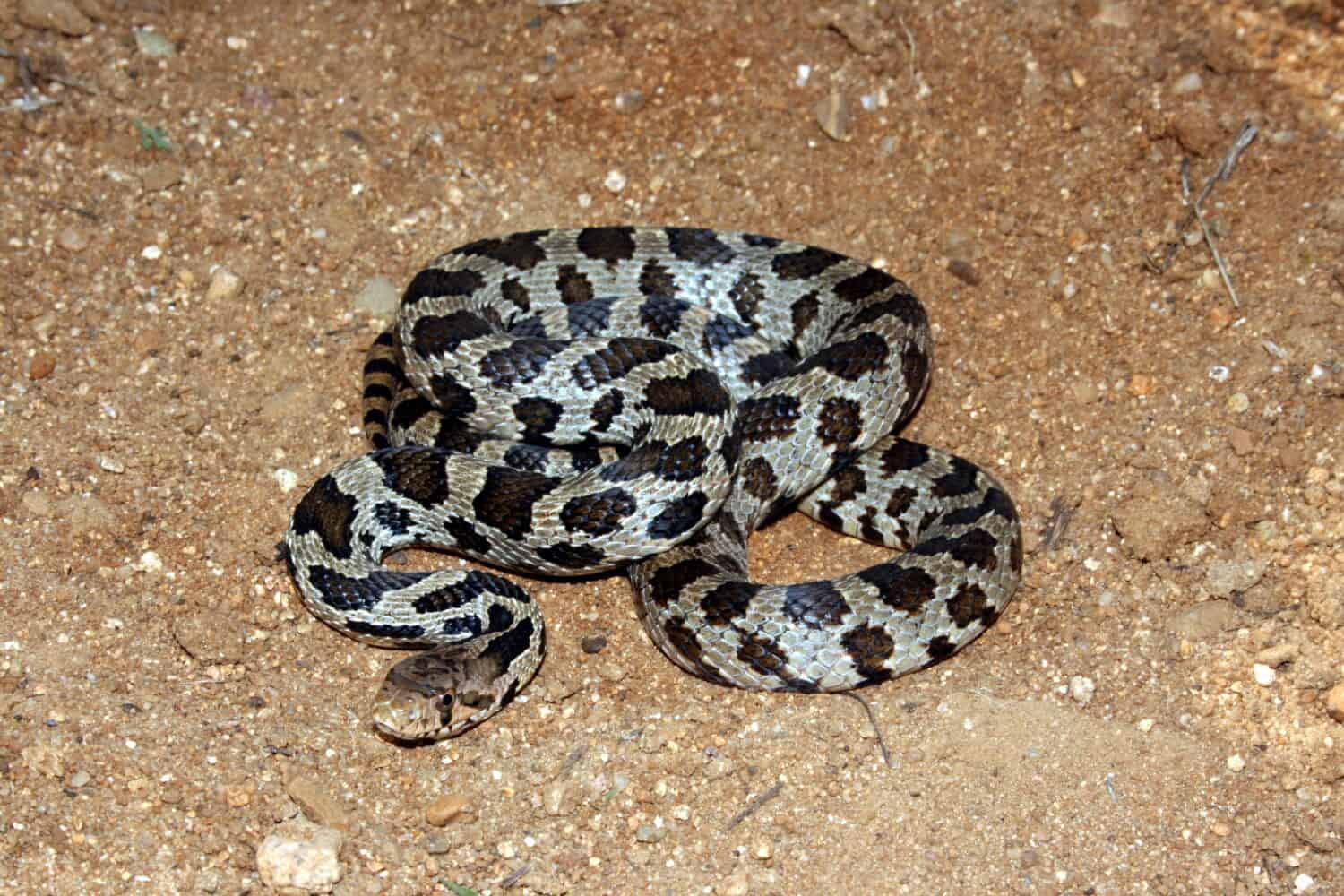
Here’s a sample of some of the most plentiful Mississippi River snakes:
- Northern watersnake
- Plains hognose snake
- Eastern hognose snake
- Bullsnake
- Eastern milksnake
- Eastern yellow-bellied racer
- Northern redbelly snake
- Western fox snake
- Plains garter snake
- Timber rattlesnake
1. The Missouri River – Missouri
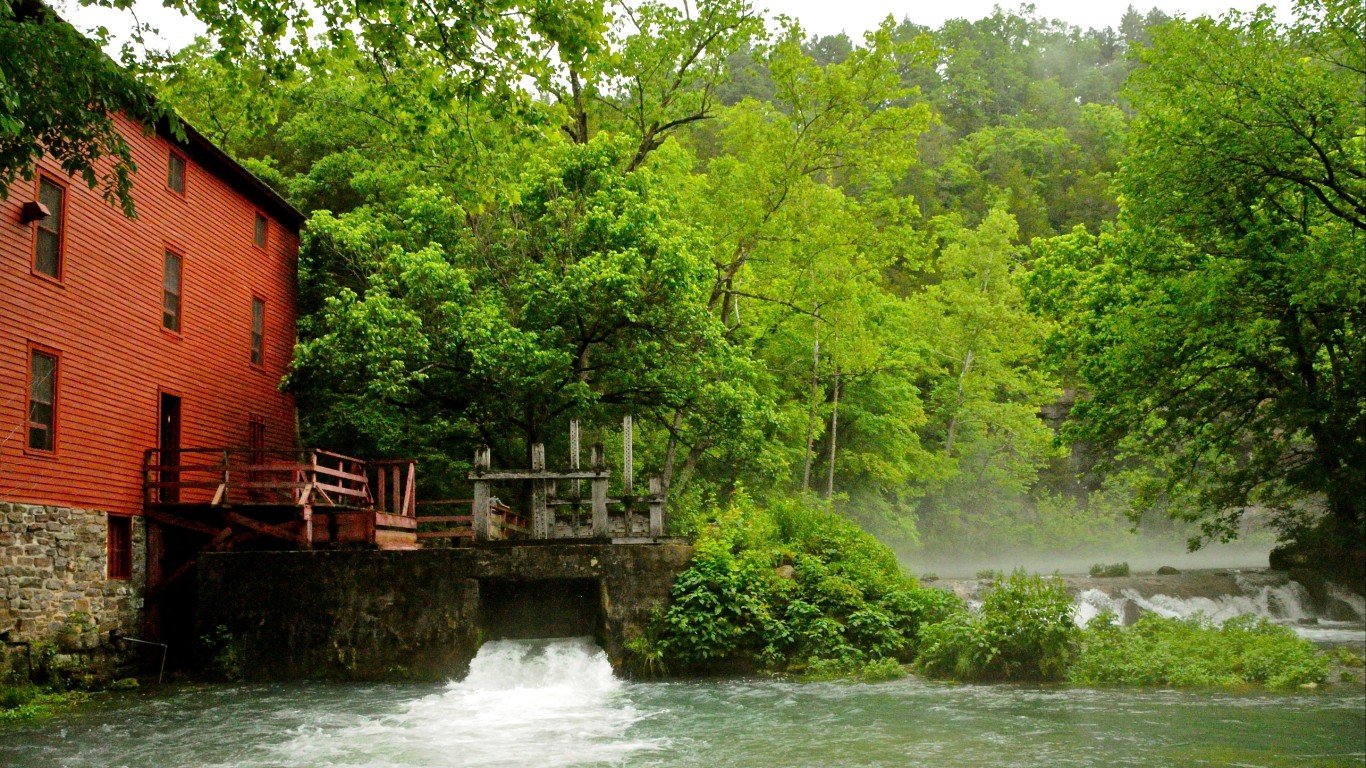
A old damn over the Missouri River
It’s surprising to discover that the Missouri River is the longest in the United States, just one mile longer than the Mississippi! No doubt, it will fall behind one day as the Mississippi River Delta slowly builds up silt and extends further into the Gulf of Mexico. Running through the lightly-populated Plains States and Upper Midwest, the Missouri is home to various species of water snakes, including the deadly water moccasin or cottonmouth. This is one of only four venomous snake species in the United States, the others being the coral snake, rattlesnake, and copperhead. Still, it’s wise to NOT go looking for these snakes no matter where you are.
Missouri River Snakes Species
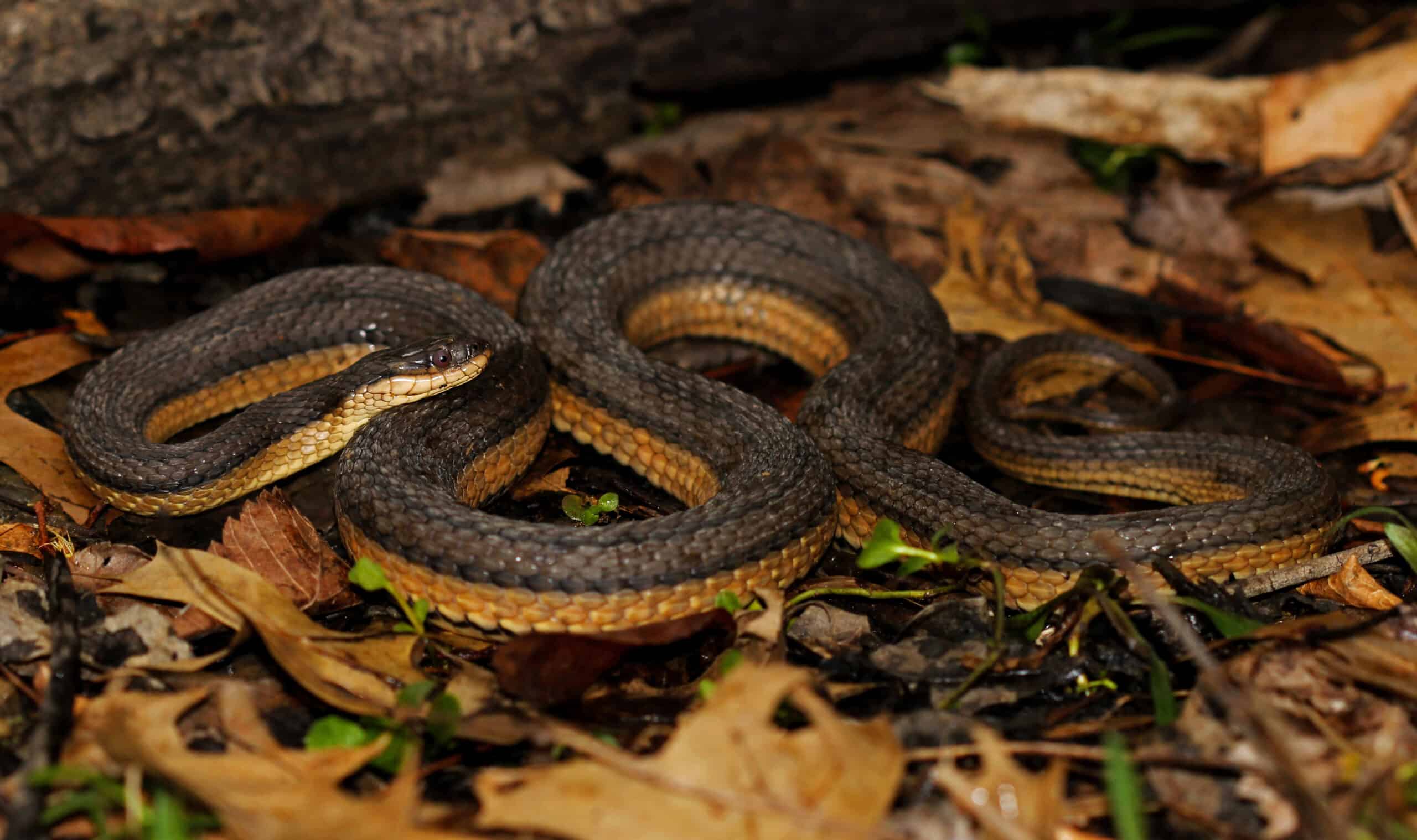
This is a representative sample of some of the snake species in and around the vast Missouri River.
- Northern water snake
- Diamondback water snake
- Yellow-bellied water snake
- Graham’s crayfish (or crawfish) snake
- Western mud snake
- Water moccasin (cottonmouth)
- Broad-banded water snake
Avoiding Snakes

The best way to survive a snake encounter is not to have one. Mostly, snakes try to escape from people, but when you mess around in places with a lot of concealing underbrush, deadwood, or rocks, you raise your chances of surprising one and being surprised by one. The golden rule is to give them room to escape as they want nothing to do with humans. Most of the time. It should be noted that you won’t always have any warning you’re about to be bitten, even from a rattlesnake, as they do not always shake their rattles.
If avoidance isn’t an option, then dress protectively with long pants and boots. If you are covered and careful it is unlikely that you will get bit.
What To Do If You’re Bitten?

If you do get bitten, try to notice any identifying details or snap a picture of it, if possible, to help medical staff determine whether it is a venomous species. Venomous or not, seek medical attention. Even a non-venomous snake may bite to defend itself, injecting bacteria into the wound they create that can lead to an infection. You may need a preventive course of antibiotics. Never try and catch the snake, not only are you likely to be bitten yourself but the medical team don’t want to deal with a snake bite and the snake itself!
First Steps and Care

The U.S. Forest Service recommends these emergency steps if you’re bitten by a venomous snake:
- Keep calm
- Call 911
- Wash the area with soap and water
- Remove jewelry so it doesn’t constrict swelling
- Immobilize the area
- Keep the wound below heart level
- Get someone to drive you calmly and safely to the nearest hospital
Now that you’re fully armed with snake knowledge, go back to enjoying your rive float. But maybe keep your hand out of the water . . . just in case.
Sponsored: Want to Retire Early? Start Here
Want retirement to come a few years earlier than you’d planned? Orare you ready to retire now, but want an extra set of eyes on your finances?
Now you can speak with up to 3 financial experts in your area for FREE. By simply clicking here you can begin to match with financial professionals who can help you build your plan to retire early. And the best part? The first conversation with them is free.
Click here to match with up to 3 financial pros who would be excited to help you make financial decisions.
Thank you for reading! Have some feedback for us?
Contact the 24/7 Wall St. editorial team.



